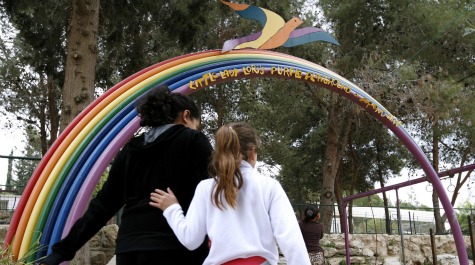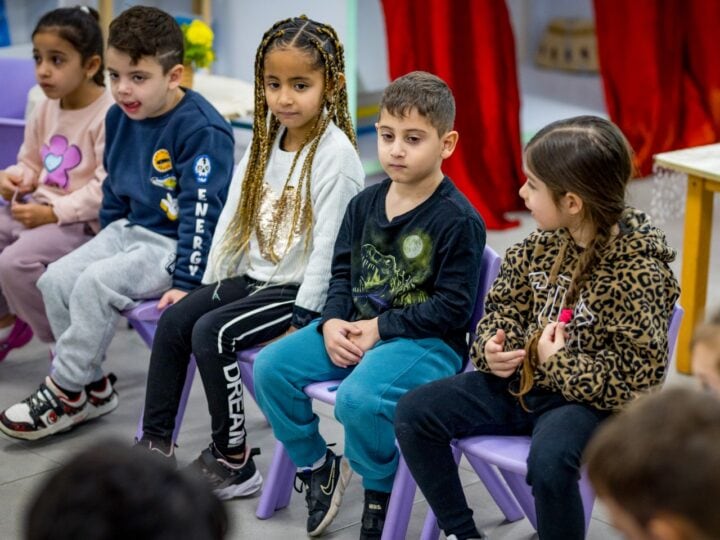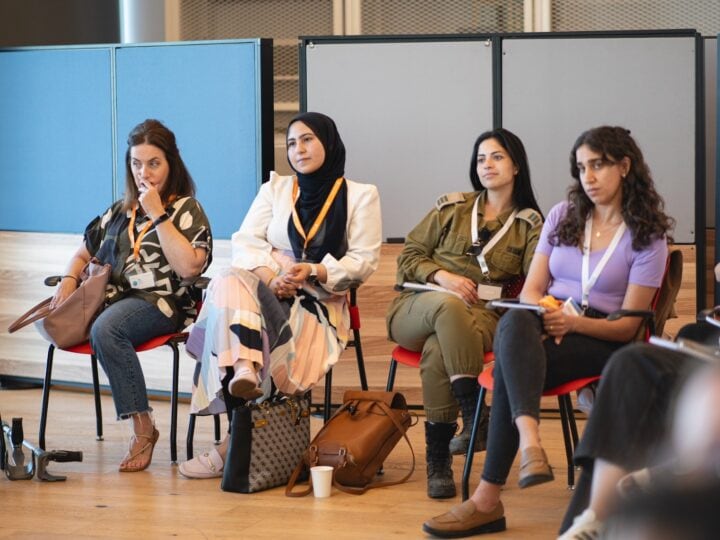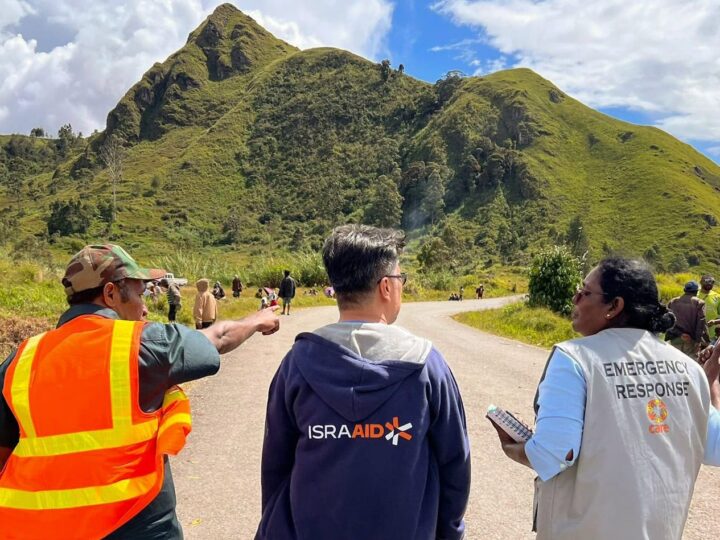
Long before universities starting granting graduate degrees in peacemaking and diplomacy, a handful of Israeli families — three Jewish and one Arab – devised their own path to a better future for their children. Together they founded a new intentional community in 1979, based on trust and shared values.
The village they eventually built is located about halfway between Jerusalem and Tel Aviv, not far from Mini Israel. It is called Neve Shalom in Hebrew; Wahat al-Salam in Arabic; Oasis of Peace in English.
One of the founding mothers, Nava Sonnenschein, says the idea was not a throwback from Woodstock nor an interfaith experiment.
“We were people with a great vision who were frustrated with the situation in Israel. We wanted to find a better way to live together,” she tells ISRAEL21c. “I saw that it would be great to have a joint community, to live with more equality and understanding. We wanted to have an influence on Israeli society.”
The village today houses about 50 families. It has a hotel, conference halls, restaurant and café as well as the School for Peace, which Sonnenschein founded out of her experiences in Jewish-Arab dialogue in Haifa and Lod. This unusual institution has directly touched the lives of about 50,000 people over the years.
Not just ‘feel good’ seminars
“There were no schools for diplomacy back then,” relates Sonnenschein. “There were many academies for war and no schools for peace.”
Leading Jewish and Arab non-profit organizations such as Physicians for Human Rights and Bimkom have benefited from seminars and courses held at the School for Peace, which is funded by independent donors.
These are not one-day “feel good” seminars where Jews meet Arabs, but intensive months-long training platforms aimed at creating long-lasting dialogues and understanding of each other’s values and contributions to society. Israeli universities award undergraduate and graduate credit for School for Peace coursework.
The methodology is to look at asymmetric power structures instead of interpersonal relations of the group. The school’s approach has been applied not only in Israel but also between the Greek and Turkish Cypriots, Irish Catholics and Protestants, and among adversaries in South Africa, Kosovo and Los Angeles. The Peace University in Costa Rica uses its model, too.
Some of the courses are given at the main campus; others at Tel Aviv, Haifa, Ben-Gurion and Hebrew universities. The courses combine theory and the experiential process of dialogue between different ethnic groups.
A 21-month “change agent” course helps Israeli and Arab Palestinian professionals to find out how they can be activists for peace, whether they are journalists, lawyers or architects. Each course includes 40 participants, based on grants from USAID, the United States Agency for International Development.
The last 30 years living and teaching peace haven’t been all love and roses, Sonnenschein admits. Like in any community anywhere, Oasis of Peace residents face hardship and conflict. “The difference here is that we are committed to talk to get to a dialogue and not to violence,” she says.
“And yes, it takes a lot of energy to hear a lot of pain and anger and frustration, but I think I get my energy through the changes I see,” she adds. “Those of us living here have been doing it for 30 years. I have gotten over the need to control the other, to be dominant. I have learned how to share power with my colleagues.
“And, too, I think — my identity as an Israeli Jewish person has been broadened to include the other.”















